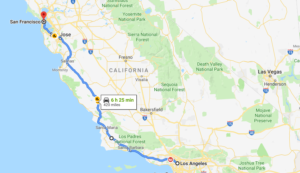Create a Personal Career Road Map: Part 4 of Become the CEO of Your Career
Throughout this series, the theme has been to take control of your career and personally own the outcomes. What happens so often is that in the busyness of driving results, career planning may fall to the wayside, leaving major career decisions in the hands of others – your boss, your company, or even a recruiter. Now you can be responsible for creating your own career management roadmap for the future.
The strategic plan begins with elements of self-awareness including assessments of your vision and values and strengths and opportunity areas.
These are all tools for introspection and evaluation which is where the career map begins. Think of this as a road trip. Now when I was a child growing up in Los Angeles, our family summer vacations were 382 miles away, in the San Francisco Bay Area. Key decisions included:
- Where exactly we were going (San Francisco plus Redwoods or Lake Tahoe)
- How to get there (by car)
- What path to take (Hwy 101, usually)
- How ready our vehicle was for travel (maintenance, oil change)
- What maps and stops along the way (my Dad was not a fan of stopping!)
In the same way, your career roadmap must contain elements including:
- Where you want to go and when. Whether it’s a career change, promotion, lateral move, or a new job, where do you want to go and by when? Reference the vision you developed earlier and put a date on it. I would like to become an entrepreneur by 11/1/2020. I would like to get promoted to Sr. Manager by 12/2/2021.
- How are you going to get there? Just as there are many paths from Los Angeles to San Francisco, and many side detours possible (beautiful Santa Barbara, or maybe explore Big Sur), decide on the best path for you. I want to achieve a promotion to Sr. Manager first, then Director. Or I want to network and understand what I need to do to become an entrepreneur before I quit my day job.
- Decide which road to take. The road will be those actions that you want to take in pursuit of moving forward. The decision on the best path can be determined in several ways:
a. Perform a Gap Analysis. If I’m currently a Project Manager looking for promotion to Sr. Manager, take a look at the skills and requirements of that targeted role and compare to where I’m at currently. What do I need in terms of education, experience, etc. If I’m looking to change careers, take a look also at skills and requirements for a new career and where I need to shore up my efforts.
b. Do a SWOT analysis on your career. This is looking at Strengths, Weaknesses, Opportunities, and Threats to a future pathway. Use these results to determine the next steps.
c. Look at strengths and opportunity areas that you developed earlier, and put together a plan to enhance these opportunities and/or maximize your strengths further.
- How ready are you for this journey? Go back and look at the values, strengths, and opportunity areas again. These provide clues on where you should be spending your efforts. Do you have an opportunity area to network with others to a greater extent? Maybe your career brand is good but now you need to incorporate it within your resume and Linked In profile.
a. This is a critical step to identify actions to take in pursuit of the vision.
- Get your maps lined up. Write down all actions and goals from the previous steps. Make these SMART (Specific, Measurable, Actionable, Relevant, and Time-bound). The dates are important in keeping you accountable.
- Where do you want to stop along the way to your vision? Are there steps and milestones you can identify on the way to the vision?
- Finally, assess any other items you may need to consider, such as values (work/life balance), salary requirements, location, etc.
Your finished product is a set of steps that lead to the desired vision. These are goals and actions for you to take to achieve success.
Review your finished product with a mentor/coach/trusted advisor. It helps to have an outside perspective. Make this a document with quarterly goals supporting goals for the year and look at it every week to ensure your actions are tracking with the plan.
Best of luck in your career journey.
ACTION CHALLENGE
Throughout this series, you have defined where you want to be in the future (the Vision) and where you are right now (Strengths, Opportunities, Values). Using the techniques above, create a road map of the next actions to take. Review these with a mentor, trusted advisor, or career coach.
Lupe S. Wood, MS, PCC, is a certified Career/Executive Coach. She coaches individuals and leaders to career fulfillment, transition, and advancement. She also consults for results with businesses and solopreneurs. Her background includes 12 years in senior leadership for a Fortune 100 corporation and 7 years as a coach, with a Master’s degree in Organizational Effectiveness and Executive Coaching.
For more information, please visit my website at www.upcoached.com
- A Season of Change and Transformation for Your Career and Life - October 23, 2022
- Bad Bosses Part 3 of 4: Take Action to Pivot to a New Career - July 16, 2022
- Five Ways to Deal With a Bad Boss in Your Career: Part 2 of 3 - May 28, 2022










